1. What is Vibration & Dynamics Simulation?
Vibration & Dynamics simulation is one of the types of CAE analysis. Through the analysis, it is possible to determine the behavior of a designed structure in response to various vibrations, helping in the prevention of structural failure. Additionally, it allows for the verification of the possibility of unexpected excessive vibrations from developing.
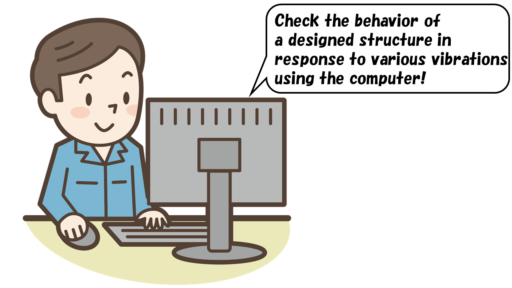
2. How to Conduct Vibration & Dynamics Simulation
First, create design data (CAD model) through CAD software, and import it into CAE software.

The next step is to generate a mesh model which comprises small elements.
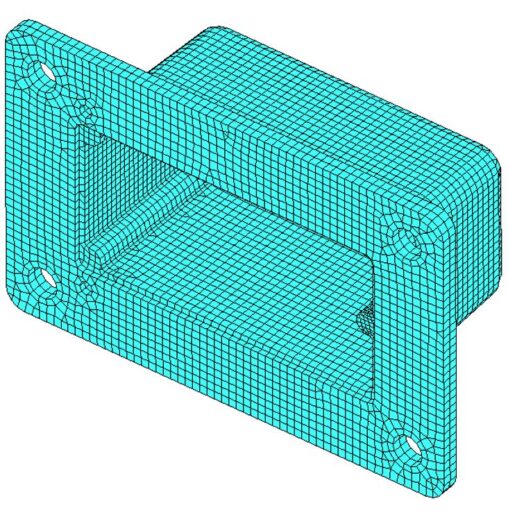
After creating a mesh model, define mass or density, stiffness or geometry and boundary condition, damping, and system excitation. Generally, vibration or dynamic analysis is commonly classified into three main categories: “Modal Analysis”, “Frequency Response Analysis”, or “Transient Response Analysis”.
(1) Modal Analysis
Modal analysis focuses on understanding natural frequency*1 and vibration patterns (called mode shapes*2) of structures subjected to dynamic loads*3. It is particularly useful for designing structures to avoid resonance*4, optimizing structural performance, and ensuring structural integrity under dynamic loads.
*1 Natural Frequencies: The frequencies at which a structure tends to vibrate most readily without any external force applied.
*2 Mode Shapes: The specific patterns of deformation a structure exhibits at each natural frequency. Also known as eigenmode.
*3 Dynamic Loads: Loads that change over time.
*4 Resonance: Phenomenon when an external force matches a structure’s natural frequency, causing excessive vibrations and potential failure.
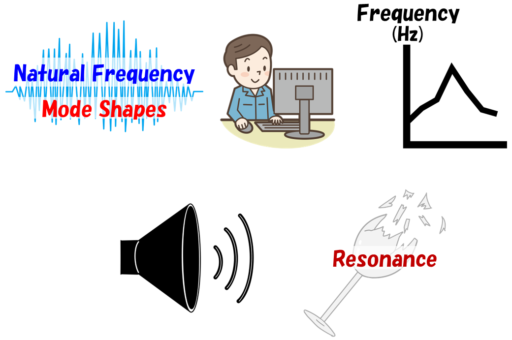
Modal analysis will enable you to determine what should be modified to make the design avoid resonance point*5.
*5 Resonance point: Frequency at which resonance occurs.

(2) Frequency Response Analysis
Frequency response analysis helps us understand how the system’s output changes in relation to the frequency of the input dynamic load. Either of the following two inputs will be applied to the structure.
– Load (Excitation force): A force that causes a structure to vibrate.
– Forced motion excitation: Instead of a force, such as acceleration, velocity, displacement are specified and causes a structure to vibrate.
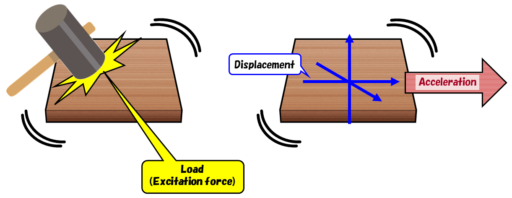
By applying these inputs, the structure’s responses (acceleration, velocity, displacement, stress on each element) can be obtained, leading to determining a frequency at which resonance occurs.
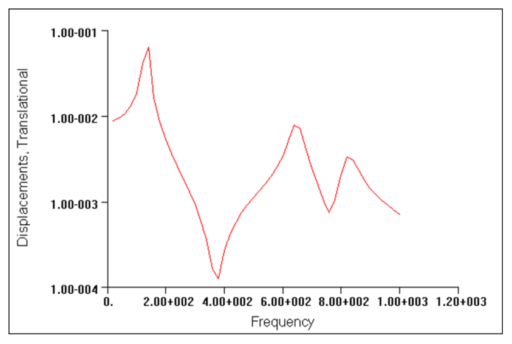
(3) Transient Response Analysis
Study of how a structure or system responds to time-varying loads or sudden changes in operating conditions. It focuses on understanding the behavior of the system during the period immediately following the application of the load or event.
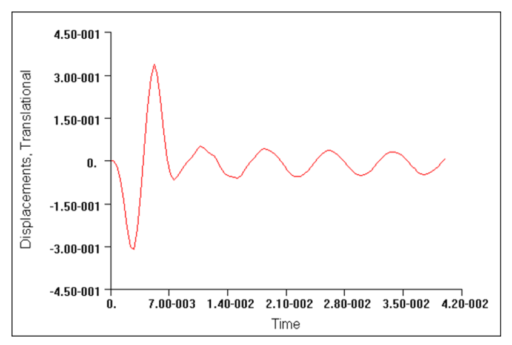
Vibration & Dynamics simulation will enable you to predict such indicators as displacement and stress of a structure, therefore, they are helpful to design a product avoiding resonance before performing physical vibration tests. You can expect to reduce the number of revisions/modifications of a structure due to its insufficient strength.
3. Design Using Vibration & Dynamics Simulation
Conducting Vibration & Dynamics simulation will allow you to understand how a designed structure responds to a variety of vibrations or dynamic loads, and to take measures to prevent the structure from failing. It is also possible to verify the possibility of excessive vibrations or resonance which is not predicted when creating a CAD model.
It is a unique advantage of computer simulation that you can review and improve the design before producing a prototype or manufacturing products. Thanks to the reduced numbers of prototypes and testing, your time and costs will be saved. This would lead to the optimization of the entire design process, making CAE analysis highly recommended.

LINE SEIKI offers a series of CAE analysis services. Get in touch with us by calling +81-50-1741-6630, or by sending your valued inquiry through webform.


